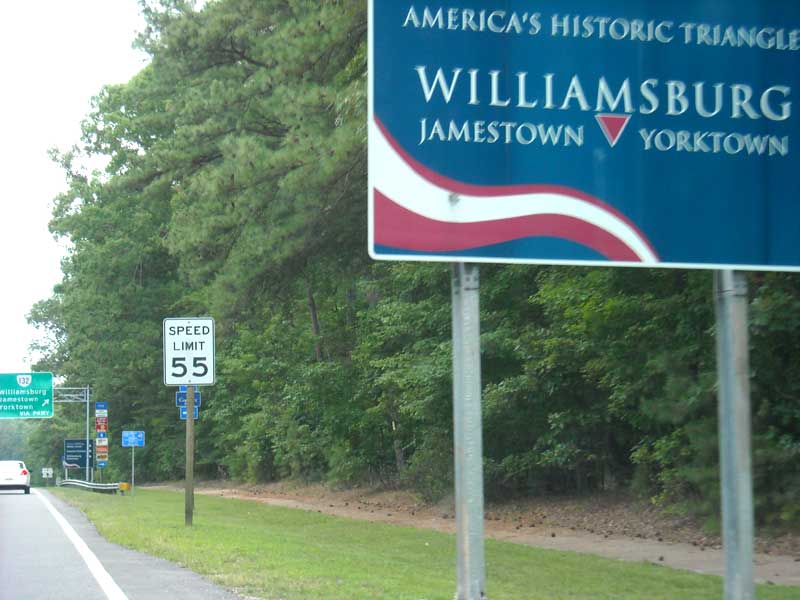
Grabbing a quick, drive-by pic, we arrive in Williamsburg for a little more US history.
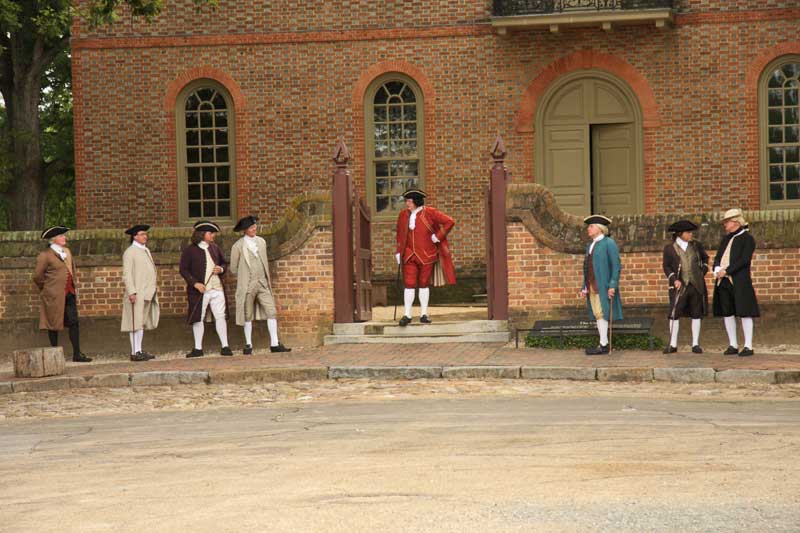
How about that, we stumble upon some colonists discussing their dissatisfaction with the British crown.
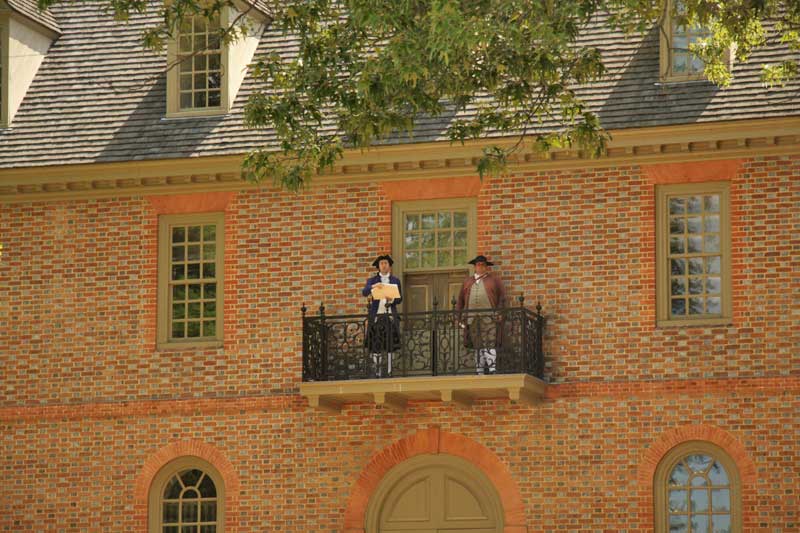
They are so upset that two of them begin reading Jefferson's newly printed document, the Declaration of Independence.
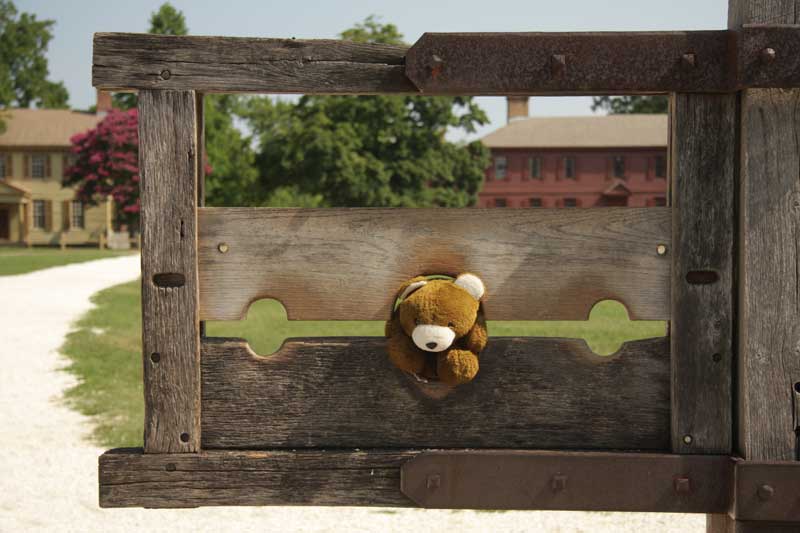
After too much revelry over our newly declared independence, Snuffles finds himself in trouble again.

A sharp-looking platoon of colonial troops marches by us (we were hiding in the bushes).
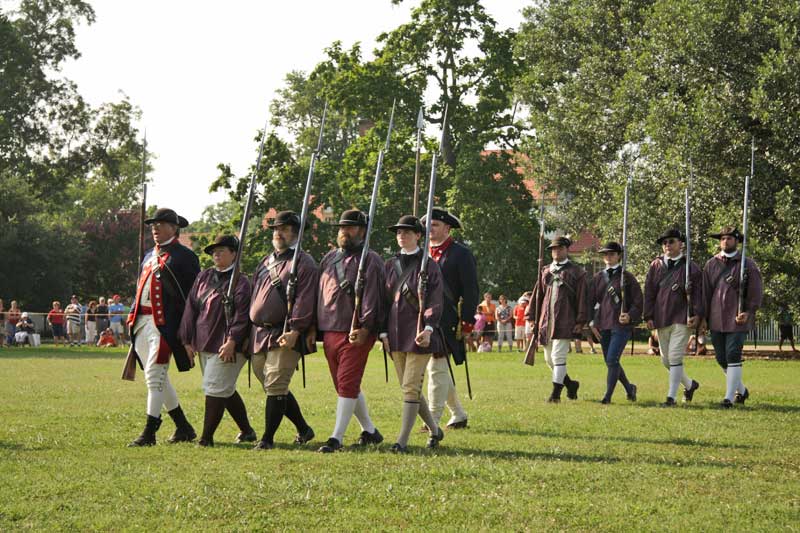
This is an example of a well-regulated militia that we've heard so much about.
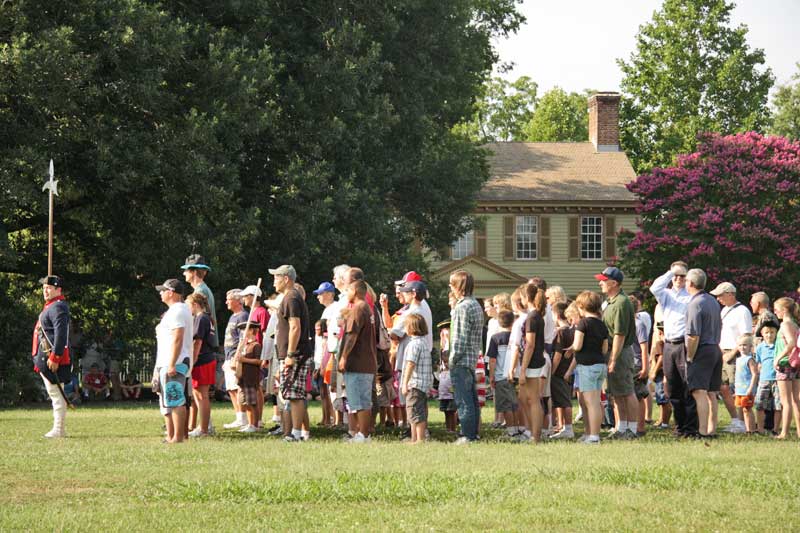
This would be your "rag-tag" militia, featuring sloppy uniforms and poor training.
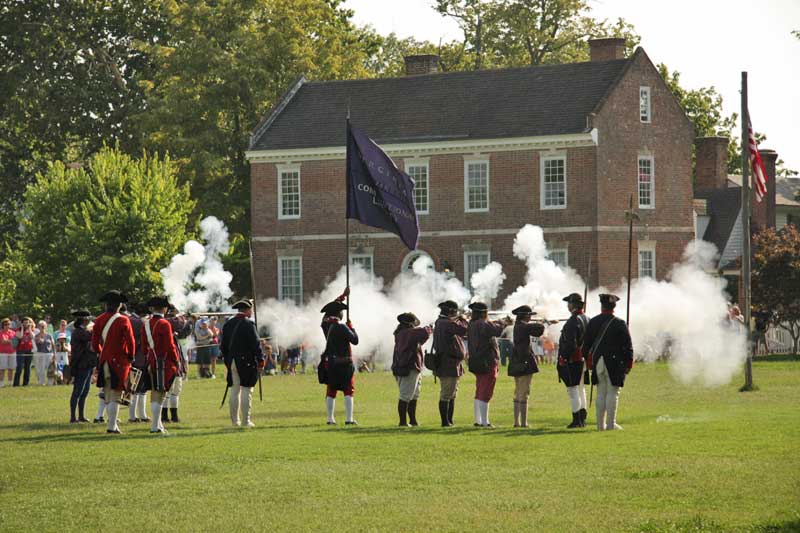
The colonists fire warning shots at those pesky British troops.
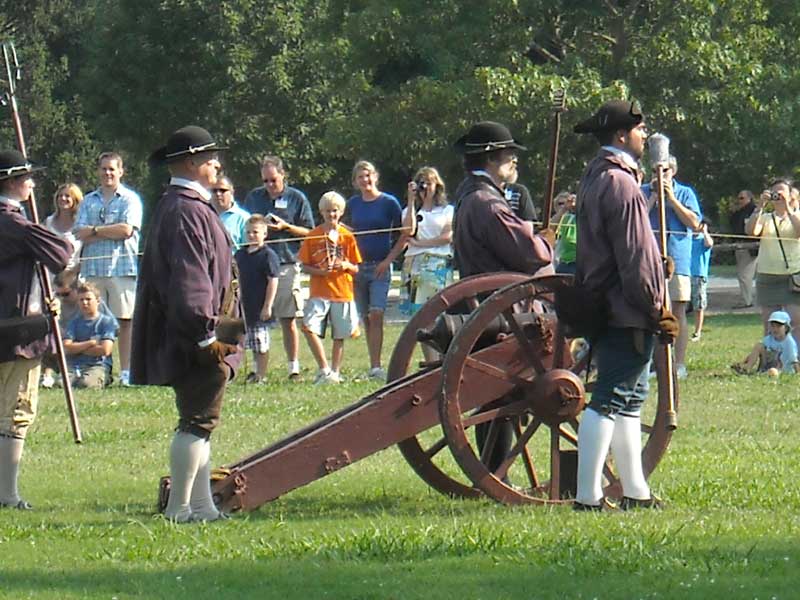
Well, that didn't do it ... we need bigger hardware.
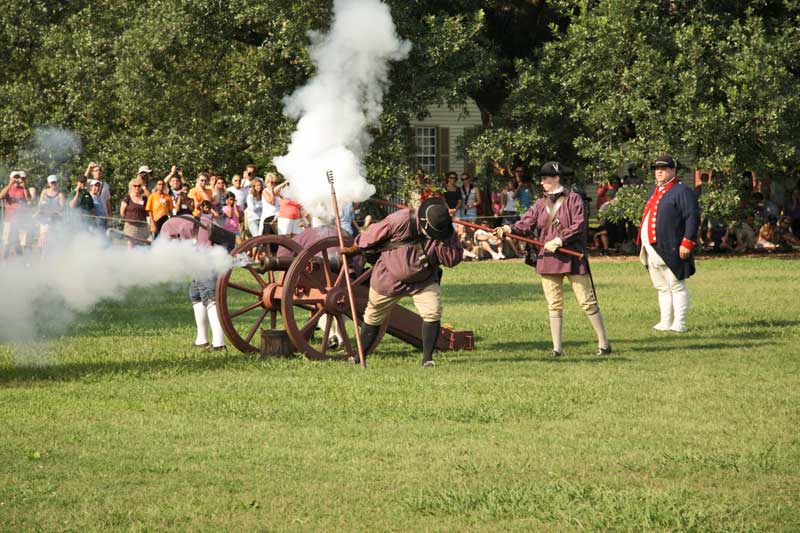
OUCH! George, I think I lost my dentures on that one.
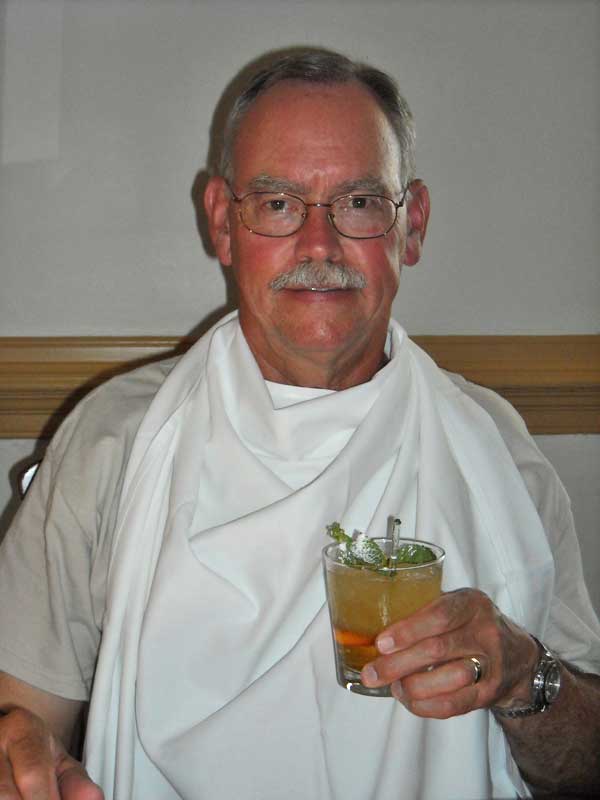
After a long day of fighting the Revolutionary War, we dine at a traditional place,
with the napkin (the size of the table) covering most of my military uniform.
This delicious mint julep brings us right back to the 18th century - I feel so colonial.
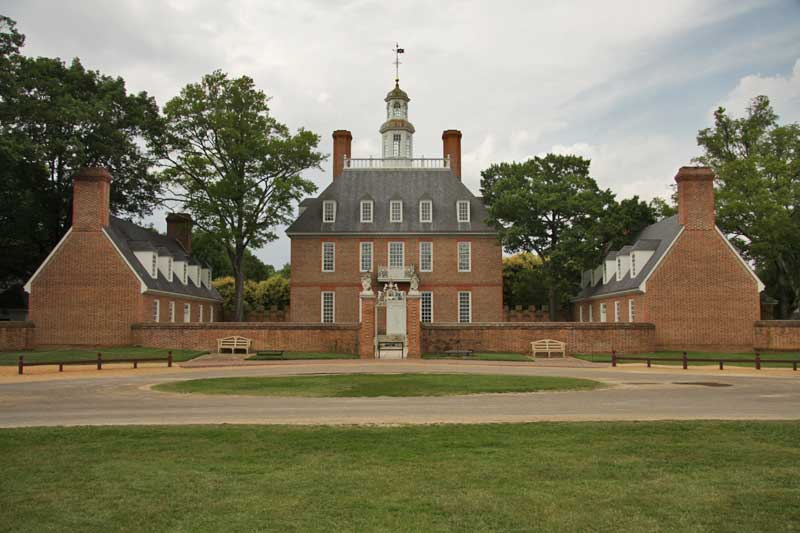
The Virginia governor's palace was originally built in 1706, burned down in 1781 while being
used as a hospital for Americans wounded at Yorktown, then rebuilt and is now furnished to
represent the residence of the last British governor. Following British rule, it was also home
to the first two governors of the Commonwealth of Virginia, Patrick Henry and Thomas Jefferson.
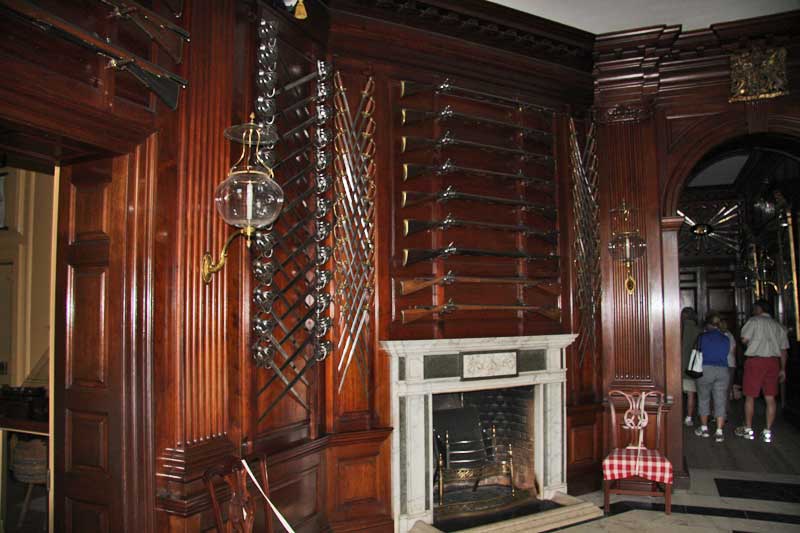
Just inside the front door of the palace, one sees the well-fortified lobby, enabling the British
governor's staff to defend the palace against the rowdy Colonists who keep bringing up issues
like "freedom", "self-government", "liberty", and "the pursuit of happiness". The nerve of them!


In case things really got out of hand, extra guns were always at-the-ready.
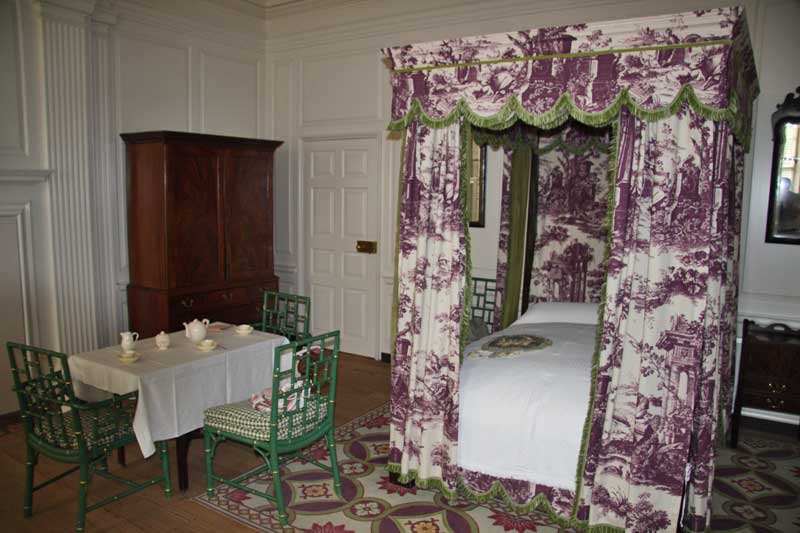
The palace's restoration allowed historians to furnish the house in period furniture
"remakes", making the whole job a lot easier and allowing photographs to be taken
in the house without fear of degrading old, original furniture with a light flash.

It's time to leave the governor's palace, and Williamsburg, and head
over to Yorktown, site of a decisive battle of the Revolutionary War.

Gen. George Washington's troops along with French troops under Gens. Lafayette and Rochambeau,
defeated British troops under Gen. Lord Cornwallis at Yorktown. This proved to be the last
major battle of the Revolutionary War, with the surrender of the 8,000 British troops causing
Britain to begin negotiations for the end of the war, resulting in the Treaty of Paris in 1783.
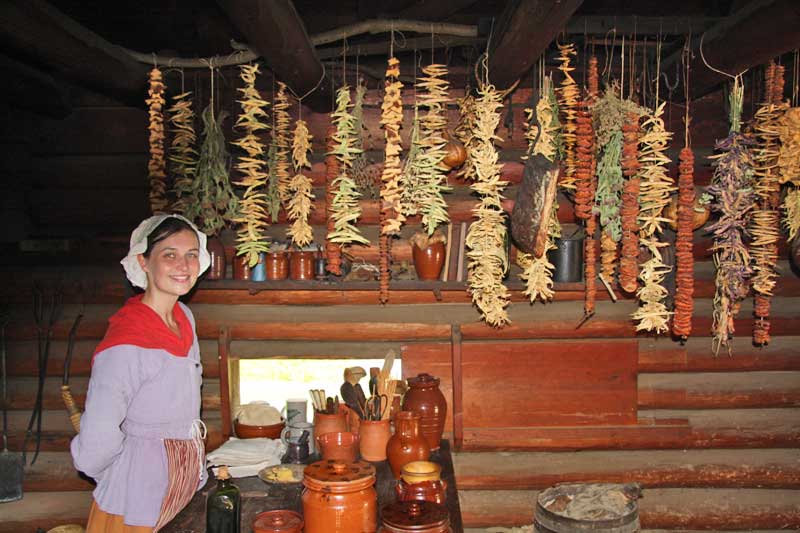
A small farm re-creates life in the early 1780's in the colony, and then the state of Virginia.
The farm and a re-created Continental Army encampment are all part of the Yorktown Victory Center.
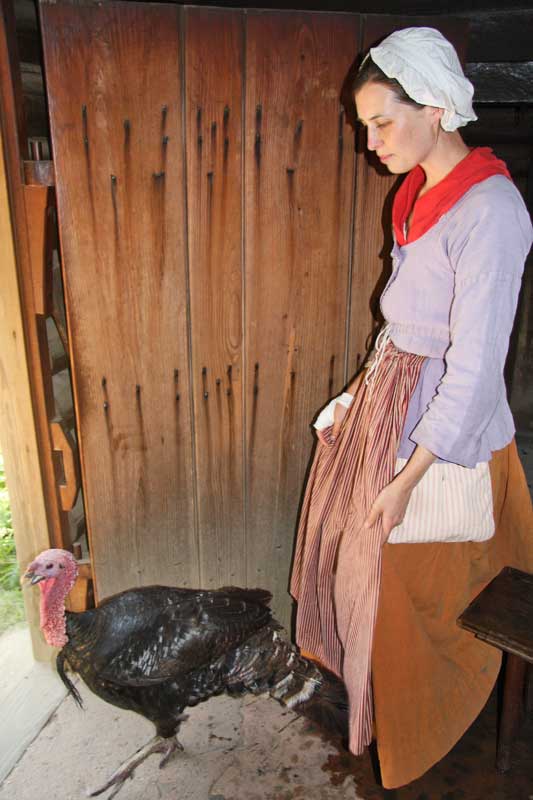
Turkeys walk in and out of the building freely and are usually underfoot, except
in November, where they're a bit hard to find and capture, for some reason.
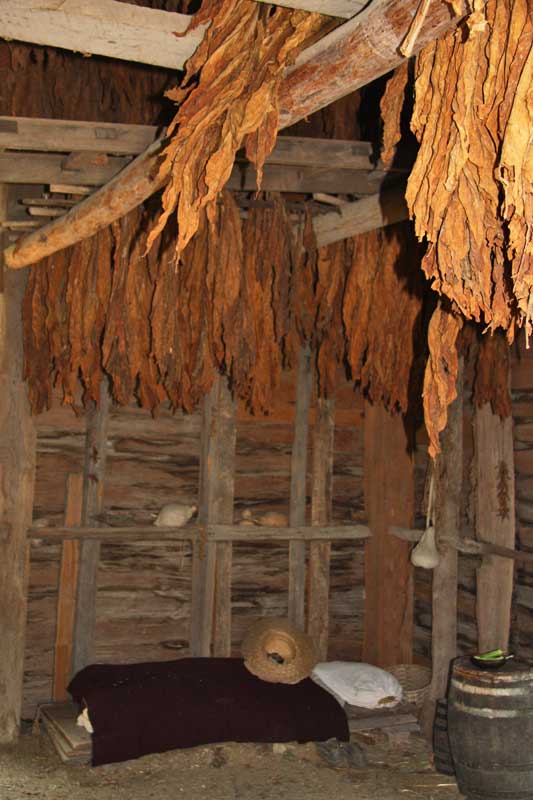
Tobacco farmers often had to sleep with the product drying in the eves of their bedrooms.
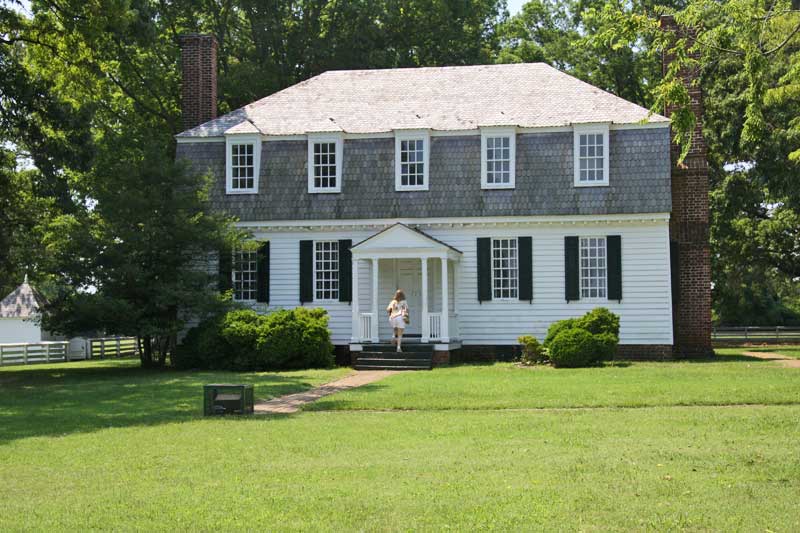
Mary walks up the stairs of the building where the surrender was signed between Gen. Washington
and Gen. Cornwallis. A short driving tour took us through the areas where Yorktown was held
under siege until Cornwallis finally surrendered his 8,000-man army, ending the Revolutionary War.

A short drive to Jamestown brings us to the first colonial settlement, which started with the landing
of three ships in 1607. Tobacco farming proved to be the cash crop that allowed the colony
to thrive, and Jamestown served as Virginia's capital during the 17th century.
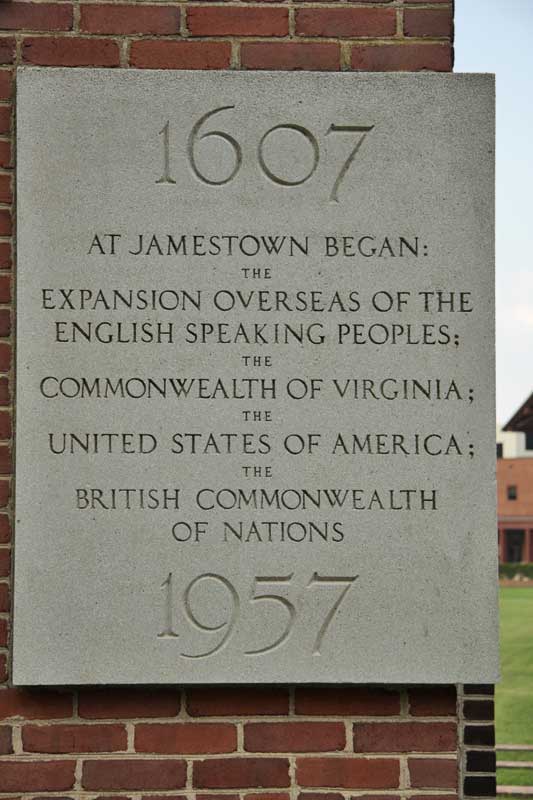
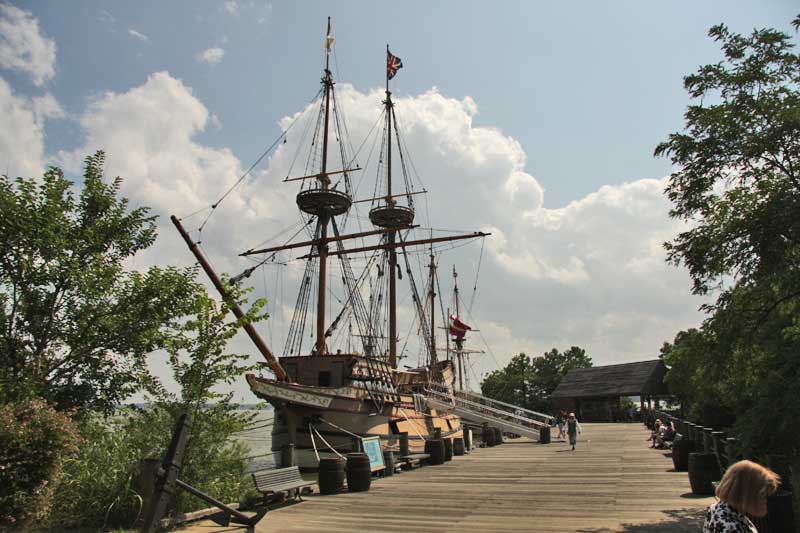
Replicas of the three ships landing here in 1607 - we toured
each one and thanked our lucky stars we weren't colonists.
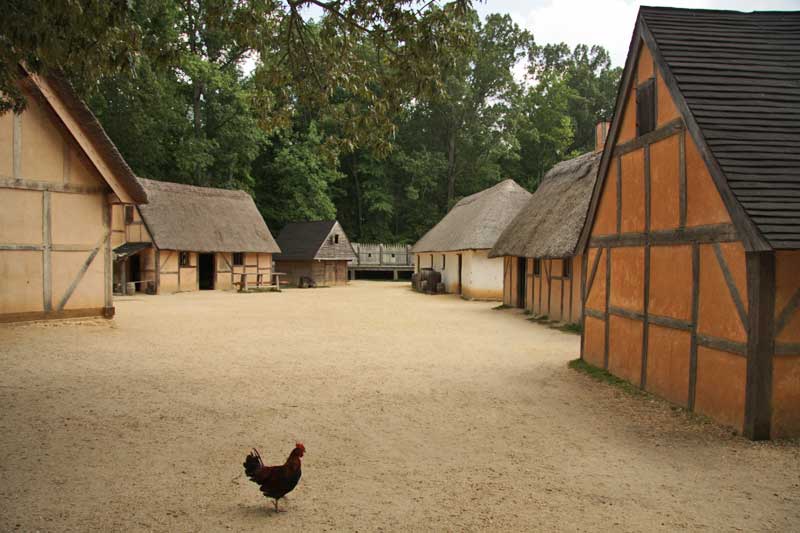
A Powhatan Indian village re-creation displays farming methods and demonstrates various
aspects of life in the village including hunting, fishing, grinding corn, and making cordage.
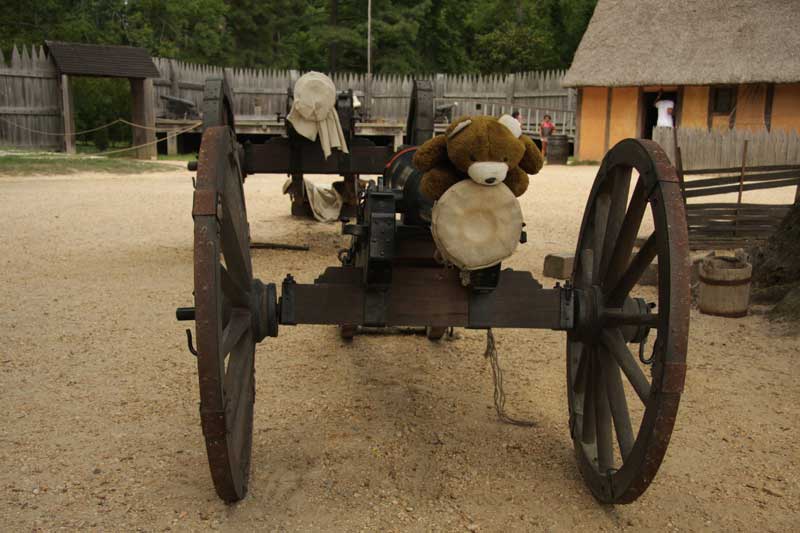
The re-created James Fort depicts the settlement from 1610-14, showing various
military hardware and tools used in commercial enterprises at the time (wood working,
blacksmith-forged tools, etc.) Apparently the big cannons were used to keep bears at bay!
Our vacation schedule forced us to leave Virginia and head north. We had a very nice
dinner/visit with a teacher colleague of Mary's just outside of Washington, DC, and the
next day we had the dim-bulb idea to drive through the nation's capital on our way out
of town towards New York City. We're still not sure why we thought that was a good idea.
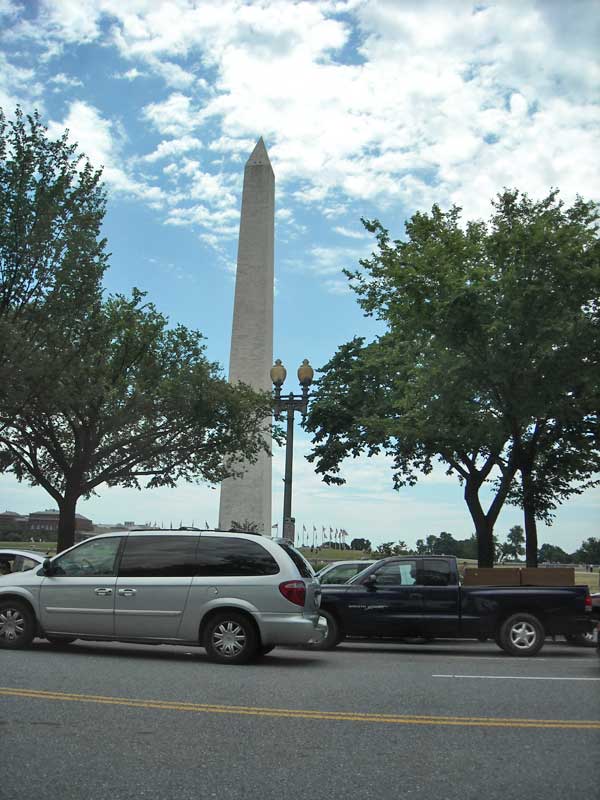
While taking this pic of the Washington Monument, we were stuck in heavy traffic,
confused by traffic circles and finally we came to a stop light. Sitting there
waiting for the light, I quickly grabbed a point-and-shoot camera and took the
picture just as the light changed and the guy behind me gave me the horn and a
single-digit salute. Welcome to Washington ... now go home!
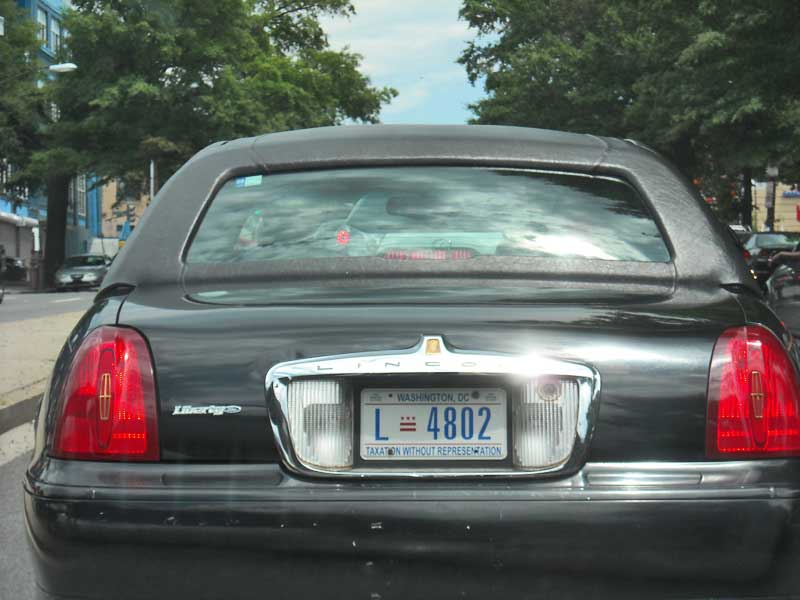
When I first saw this license plate I wondered why the phrase, "Taxation Without Representation"
would be on the plate. It then occurred to me that it's true - the citizens of Washington, DC
are taxed just like everyone else, but they have no representatives in the Congress. Tea Party!!!
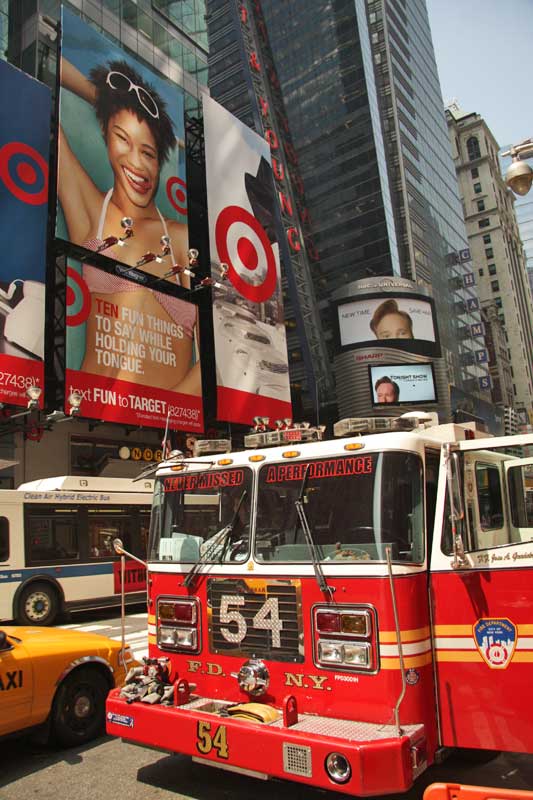
We finally got out of DC and made it all the way to ... Times Square!
Click on the link below to follow our travels to Ground Zero and beyond.
Click here for Ground Zero

Return to top level